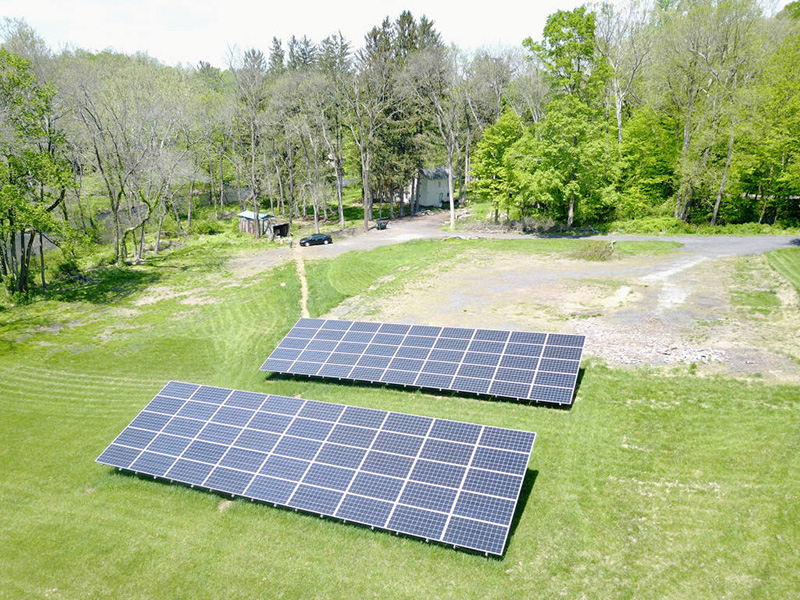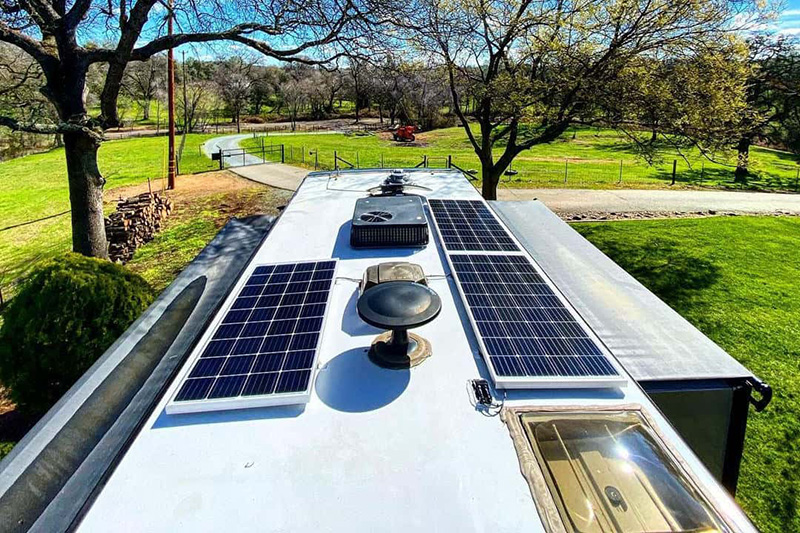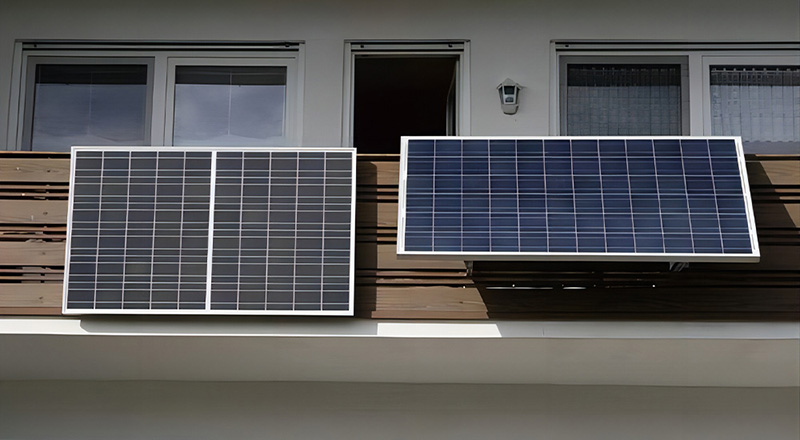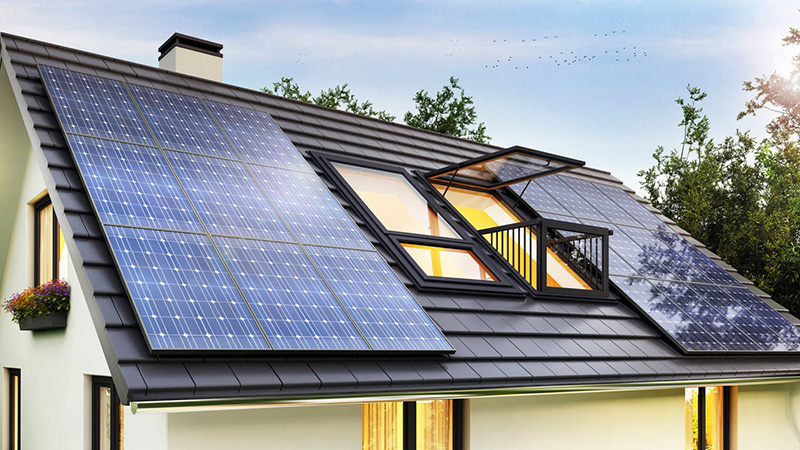What's the best solar panels to buy?
2023-09-15
Description
The best solar panels largely depend on your specific needs and preferences. For a balance of quality and efficiency, consider monocrystalline panels. Among the leading brands, Tongwei stands out for its superior performance and durability, making it a solid choice for those looking to invest in reliable solar technology.
Solar Panel Technology
Solar panel technology has rapidly advanced in recent years, making renewable energy more accessible and efficient than ever before. In 2020, the global solar panel market was valued at around $115 billion and was expected to grow at a compound annual growth rate (CAGR) of 4.3% from 2021 to 2027. This growth is driven by the increasing demand for sustainable energy sources, as well as advancements in photovoltaic (PV) technology. The crux of solar panel functionality lies in its ability to convert sunlight directly into electricity. This conversion process, coupled with the variety of solar cell types and their associated performance metrics, forms the backbone of solar panel technology.How Solar Panels Work
Sunlight contains energy particles called photons. When these photons hit a solar panel, they dislodge electrons from atoms. As these electrons flow through the panel, they generate an electrical current. This current, known as direct current (DC), is then converted into alternating current (AC) by an inverter, making it usable for households and businesses.Types of Solar Cells
- Monocrystalline Solar Cells:
- Made from a single crystal structure.
- Typically have a black hue.
- Offer high efficiency and space efficiency.
- More expensive than other types.
- Polycrystalline Solar Cells:
- Composed of multiple crystal structures.
- Typically have a blue hue.
- Slightly less efficient than monocrystalline cells but usually cheaper.
- Thin-Film Solar Cells:
- Made by placing one or more films of photovoltaic material on a substrate.
- More flexible than other types.
- Lower efficiency, but can be cheaper and better suited for certain applications.
- Concentrated PV Cells:
- High-performance cells used in conjunction with lenses or mirrors to concentrate sunlight.
- Very high efficiencies, sometimes exceeding 40%.
- Typically used in solar farms and large-scale solar projects.
Efficiency and Performance Metrics
- Conversion Efficiency:
- Indicates the percentage of sunlight hitting the panel that gets converted into usable electricity.
- Average efficiencies range from 15% to 20% for most commercial panels.
- Temperature Coefficient:
- Represents how much the panel's performance decreases for every degree above 25°C (77°F).
- A lower temperature coefficient indicates better performance at higher temperatures.
- Performance Ratio:
- Compares the actual performance of a panel to its performance in standard testing conditions.
- A performance ratio close to 1 indicates that the panel performs close to its rated efficiency in real-world conditions.
Factors to Consider When Buying Solar Panels
When diving into the world of solar panels, a myriad of factors come into play. These determine not just the initial costs but the long-term benefits you reap from your solar installation. By scrutinizing each of these factors, you ensure an efficient and cost-effective solar experience.Efficiency Rate
A solar panel's efficiency rate refers to its ability to convert sunlight into usable electricity. While average solar panels have efficiency rates between 15-20%, higher-end models, like those from Tongwei, can surpass this range. A higher efficiency rate implies you'll need fewer panels to meet your energy needs.Lifespan and Warranty
The longevity of your solar panels is crucial for ensuring a return on investment. Most panels come with a lifespan of around 25-30 years. Notably, Tongwei offers a competitive warranty, assuring quality and durability for users. A robust warranty can save you unexpected maintenance or replacement costs down the line.Manufacturer Reputation
Established manufacturers tend to produce reliable and efficient panels. Researching industry leaders and user reviews can give insights into the best brands in the market.Price vs. Performance
| Brand | Average Price (per watt) | Efficiency Rate |
|---|---|---|
| SunPower | $2.50 | 22% |
| LG | $2.30 | 21% |
| Tongwei | $1.90 | 20% |
| Canadian Solar | $1.80 | 19% |
Installation and Maintenance Costs
While the upfront cost of the panels is vital, the installation and maintenance costs can also weigh in on your decision. Depending on your location, solar panel installation can range from $15,000 to $25,000 for a standard residential system, excluding incentives or rebates. Maintenance costs are typically low but can vary depending on the panel's quality and local climate conditions.Comparing Residential vs. Commercial Solar Panels
Solar energy's inexorable rise as a primary renewable energy source has paved the way for innovations and custom solutions tailored to varied needs. At the forefront of this evolution are residential and commercial solar panels, each designed for specific applications. The differentiation between these two stems from their intended use, size, cost, and several other factors. As of 2020, with the global solar market accelerating, the distinction between residential and commercial panels has become even more pronounced. This comparison is paramount for prospective solar adopters to ensure that they choose the right setup for their specific requirements.Size and Power Output Differences
Residential solar panels are typically designed to fit comfortably on the roofs of homes. They are usually smaller, averaging around 65 inches in length and 39 inches in width. With a standard power output ranging from 250 to 370 watts, these panels are optimized for domestic energy needs. On the flip side, commercial solar panels are built for large-scale energy generation. They are notably larger, with an average length of 78 inches and a width of 39 inches. Correspondingly, their power output is higher, often ranging between 370 and 470 watts. Given their enhanced capacity, commercial panels are suitable for businesses, factories, and other expansive installations where energy demand is considerably higher. Dive into the nuances of Solar Panel Efficiency to appreciate these variations better.Cost Implications
Cost is a significant factor when comparing residential to commercial solar panels. Although commercial panels are more expensive due to their larger size and higher output, the cost per watt often turns out to be lower than residential panels. This is due to economies of scale; when purchasing in bulk for large commercial installations, the price per unit often drops. While residential panels may seem more affordable at face value, consumers might end up paying a higher price per unit of energy produced. Understanding Solar Panel Pricing can provide a broader perspective on this.Installation Considerations
- Space Requirements: Commercial panels, due to their larger size, require ample space. While this is usually not an issue for businesses with expansive rooftops or ground space, it's a critical consideration. Residential panels, being more compact, are better suited for standard-sized home roofs.
- Mounting Systems: The mounting system for commercial panels is often more robust and intricate, supporting the panels' weight and ensuring maximum sunlight exposure. Residential setups usually employ less complex mounting solutions.
- Grid Connectivity: Commercial installations might necessitate a more comprehensive grid connection, especially if they are designed to generate surplus energy to be fed back into the grid. Residential systems, on the other hand, have simpler grid connection requirements.
- Maintenance Access: Given their placement in large facilities or vast grounds, commercial panels might be harder to access for maintenance. Residential panels, usually located on home rooftops, offer easier accessibility for periodic checks and cleaning.
Environmental Impact and Sustainability
Solar energy stands out as a beacon of hope in the ongoing quest for sustainable and environmentally-friendly energy solutions. With the global climate crisis looming large, it's evident that a shift away from fossil fuels is not only beneficial but essential. By 2019, solar energy offset approximately 2.5% of the world's electricity consumption, representing a vast reduction in carbon emissions. But how do solar panels, the workhorses of this energy transition, contribute to our planet's well-being, and what happens to them at the end of their lifespan?Benefits for the Planet
- Carbon Emission Reduction: Solar panels directly contribute to reducing carbon footprints. For every megawatt-hour (MWh) of solar power produced, approximately 0.75 to 1 ton of carbon dioxide emissions are prevented compared to coal-based energy production. This transition is essential in combatting global warming. Learn more from the Solar Energy's Impact on Carbon Emissions.
- Decreased Air Pollutants: Solar panels produce electricity without releasing harmful air pollutants. Traditional power generation methods, especially those reliant on coal and natural gas, release pollutants such as sulfur dioxide and nitrogen oxides. These pollutants are responsible for health issues and contribute to problems like acid rain.
- Water Conservation: Solar power systems require significantly less water than traditional power plants, ensuring that valuable water resources are preserved for essential uses. Traditional methods, especially coal and nuclear power plants, demand vast amounts of water for cooling. Understand the contrast better by exploring Water Usage in Different Energy Sources.
- Land Preservation: While solar farms require land, they often coexist with agriculture or natural vegetation. This dual use ensures food production isn't compromised. Moreover, the land used for solar installations can be reverted to its natural state if required.
Solar Panel Recycling and Disposal
As the adoption of solar energy grows, a pertinent question arises: What happens to solar panels at the end of their functional life? Typically, solar panels have a lifespan of 25-30 years. After this, their efficiency may decline, necessitating replacement. Fortunately, the solar industry is proactive in addressing this concern. A vast majority of the materials used in solar panels, including metals, glass, and wiring, are recyclable. Specialized facilities are emerging to handle the recycling process, ensuring that valuable components find a second life in new products. Europe, for instance, has led the charge with regulations mandating solar panel recycling. Apart from recycling, research is ongoing to develop solar panels with materials that have minimal environmental impact, thus further enhancing sustainability. The use of solar panels not only signals a move towards renewable energy but also embodies the principles of circular economy, emphasizing resource optimization and minimal waste. In light of the environmental challenges our planet faces, the holistic benefits of solar energy cannot be understated.


